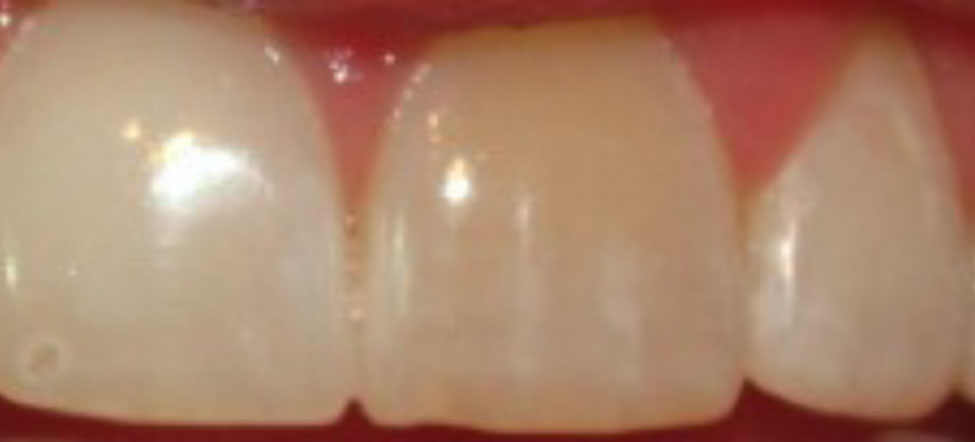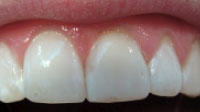Home › Forums › Cosmetic & Aesthetic dentistry › What is Tooth colored filling?
Welcome Dear Guest
To create a new topic please register on the forums. For help contact : discussdentistry@hotmail.com
- This topic has 3 replies, 3 voices, and was last updated 20/12/2011 at 4:53 pm by
 drmithila.
drmithila.
-
AuthorPosts
-
23/11/2011 at 12:08 pm #10171
wondersmiles
OfflineRegistered On: 23/11/2011Topics: 1Replies: 0Has thanked: 0 timesBeen thanked: 0 timesBonding is the term used when a dentist ‘bonds’ a tooth colored resin onto the tooth to repair a fractured, worn or chipped tooth, cover up a discoloration on a tooth, or close a small space or gap between two teeth. The dentist lightly prepares the tooth to receive the material and etches the surface so the material has more surface area to bond to. He coats the tooth with a bonding liquid and then shines a light on the tooth to set it. He then places the putty like material on the tooth and shapes it to the desired shape and then shines a light on the tooth again to harden the material. After it is set he trims and polishes the resin to a luster. This can be performed in one or more appointments depending on the number of teeth involved. Bonding usually lasts from 3 to 5 years and before needing to be repaired depending on the dietary habits of an individual. The material can chip off as it is a plastic resin, and not as strong as your natural teeth. Proper home care and professional cleanings will keep your restored teeth healthy. Bonding not only restores your tooth but also helps to improve your appearance and self-confidence. People are sometimes hesitant to smile because of the way their front teeth look, after bonding they can smile freely again.
Get more to know at Wondersmiles dental care.
23/11/2011 at 3:35 pm #14873Drsumitra
OfflineRegistered On: 06/10/2011Topics: 238Replies: 542Has thanked: 0 timesBeen thanked: 0 timesMore people are undergoing cosmetic dental treatments
There are some surgeries that have risen by 60 percent according to some studies, with middle-age women making up most of the people having the surgery.
The reason for this dramatic increase in cosmetic surgery is based on the way society is today. The combination of reality shows and the way celebrities want to make changes to their smiles has permeated through the rest of people. It also doesn’t hurt that many of these treatments are much more affordable than they were in years past.
There also used to be several risks associated with cosmetic dental treatment, but these risks no longer exist.
People are more focused on aesthetic treatment than corrective treatment, which necessitates more cosmetic dental surgery.
Teeth whitening, porcelain veneers and invisible braces are some of the most requested procedures. This trend will continue as long technology advances further and people strive have the perfect smile
20/12/2011 at 4:52 pm #14995 drmithila
OfflineRegistered On: 14/05/2011Topics: 242Replies: 579Has thanked: 0 timesBeen thanked: 0 times
drmithila
OfflineRegistered On: 14/05/2011Topics: 242Replies: 579Has thanked: 0 timesBeen thanked: 0 timesWhen you are ready to take your cosmetic dentistry practice to the next level, follow these simple suggestions and you will be creating more meaning and significance when you educate patients about the benefits associated with cosmetic dentistry by Dr. Harvey Silvermann, DDS
1. Never assume patients know what you know. Don’t take for granted that patients know even the most fundamental techniques used when providing elective cosmetic dentistry services. Some may, most do not. Take an extra minute to make sure your patient is on the same page as you are.
2. When it comes to many elective cosmetic dental services, when applicable share the perceived benefit that patients want to hear—that no shots and often no drilling (or minimal cosmetic contouring) is required.
3. Have your team members inform your patients of other real life stories (no names please!) from patients who now have a self-confident smile thanks to your cosmetic dental expertise.
4. Some patients associate cosmetic dentistry with teeth that looked like they were "fixed." Team members need to talk with pride about how natural and lifelike your veneers look. Needless to say, use a dental laboratory or create your own noninvasive veneers that provide you with a gorgeous, real lifelike appearance. 5. Team members should help distinguish the doctor’s artistic skills. Your team needs to describe how you are an artist when doing cosmetic cases. An illusionist when it comes to closing in spaces or making uneven teeth look straight. Needless to say this must be based upon sincere feelings they have about your technical expertise.
6. Show before and after photos of cases that you personally did and have team members describe the positive impact the work had on your patient. Make it relevant.
7. Share before and after photos of how each team member has had some cosmetic dentistry done by you, even if it is bonding or tooth whitening. Have your team fill out my Smile Enhancement Form. From anecdotal studies done over many years I have observed that nearly 8 out of 10 team members still have at least one tooth they would like to have cosmetically enhanced. Surprised? Establish with your patients that your team trusts you enough to do their work too.
8. No selling is ever used or needed. However, power educating requires sincerity, conviction, enthusiasm and a sense of mission. That’s what we focus on when we teach dentists and team members how to power educate patients.
9. Share how your office has a lot of experience when it comes to smile makeovers—from subtle to major transformations. Don’t hold back. Whenever possible show examples of subtle changes. Most patients can relate to subtle improvements than dramatic transformations – and they can afford to have the work done as well. For example providing 1 non-invasive veneer with in-office whitening can make a significant improvement as demonstrated in the above photograph. Our Boot Camp philosophy is "the best cosmetic dentistry is often the least cosmetic dentistry that provides our patients with more self-confidence when they smile." If you agree with that approach start to implement it as soon as possible.
10. Encourage smile previews using either computer imaging or a chairside mock-up. In either case have your team members inform your patient that they "hope" that the patient will be a candidate and if they are, your team members are confident that your patient will love the final result. One note of caution: conventional mock-ups can take a lot of time to do.
20/12/2011 at 4:53 pm #14996 drmithila
OfflineRegistered On: 14/05/2011Topics: 242Replies: 579Has thanked: 0 timesBeen thanked: 0 times
drmithila
OfflineRegistered On: 14/05/2011Topics: 242Replies: 579Has thanked: 0 timesBeen thanked: 0 times -
AuthorPosts
- You must be logged in to reply to this topic.

